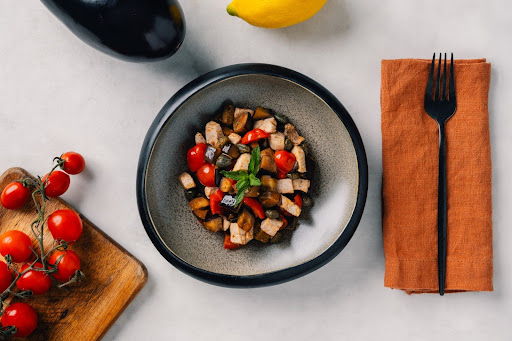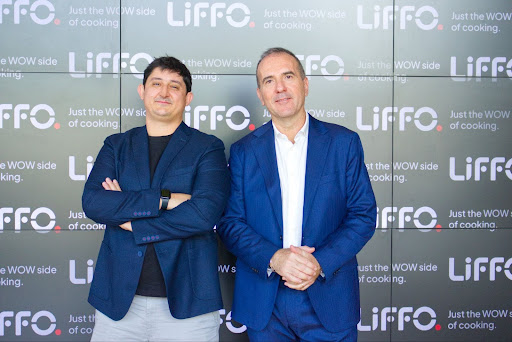
Few would dispute that AI has penetrated nearly every sector worldwide. From algorithms that improve fraud detection work and optimize production lines, to more efficient healthcare systems and personalized online shopping, AI is already embedded into our daily routines. What’s newer, however, is its arrival at the dining table.
AI is quietly reinventing the food industry by improving process efficiency, enhancing food quality and safety, and encouraging innovation. As businesses face pressure to address food waste, labor shortages, sustainability, and consumer demands, the AI-driven foodtech market is projected to reach $27.73 billion USD by 2029, with an annual growth rate of 34.1%.
This boom is not occurring in a vacuum. According to a 2024 study, AI has been the cornerstone of recent transformations in the food industry, which has expanded along with an overall increase in the world’s food consumption rates.
With caloric intake expected to keep climbing, the need for intersectoral innovation is increasingly highlighted. Simultaneously, the world’s population continues to swell, to up to 10.8 billion by 2050, raising concerns over how dietary shifts will redefine demands.
Creative Food Labs, for one, has answered this calling by developing sustainable fermentive methods in Mexico. Using biotechnology, the company upcycles agricultural waste into healthy ingredients, turning what would usually be discarded into more nutritious alternatives to sugar and trans fats.
But entrepreneurs and industry leaders have increasingly turned to AI as a solution to this multi-sectoral challenge, employing tech-powered strategies to improve supply chain management, customer experience, operational efficiency, and transport reduction times- all while reducing costs and expanding reach.
AI in food: take your pick
According to researchers, the four key AI technologies that have been adopted in the food industry include knowledge-based expert systems, the fuzzy logic technique (FLT), artificial neural networks (ANN), and machine learning (ML).
With the first, AI tools are implemented to collect data and provide solutions that mimic experts’ decision-making abilities. These systems enhance food quality by providing expert advice on quality control management, compliance with safety regulations, and hazard analysis. Industry giants like Nestlé, for example, have leveraged knowledge-based expert systems to improve and optimize formulations.
Alex Sandoval, CEO and co-founder of Allie AI, an applied AI company that builds co-pilot agents for food and beverage manufacturers, says, “Beer and soda can foam due to small adjustments to tank pressures. A lot of the time, it is a matter of gauging how ingredients react and skilled operators making small adjustments to the recipe based on years of trial and error.”
FLT, on the other hand, enhances modeling and monitoring by analyzing factors such as transport temperature, humidity, and shelf life. The ANN technique, in contrast, takes this optimization a step further by modeling non-linear systems, adapting to novel circumstances, and predicting quality indicators.
Most recently, ML has aided in decision-making, reduced the costs of sensory evaluations, and improved corporate strategies to meet users’ needs. From predictive maintenance to food safety and quality control, ML supports nearly every stage of food production, including development, transport, and consumer feedback loops.
But beyond these industry-centered AI applications, this evolving technology has also reached end consumers at the dinner table. Once confined to the background of supply chain operations, it is increasingly shaping what we eat, how food gets to our kitchens, and even how we experience dining.
Comprehensive supply chain impact
By enhancing conventional farming methods, which can no longer meet the exponential demand for food, including monocultures, AI is transforming the core of the supply chain- one seed at a time. AI-powered machines like drones and self-driving vehicles give agriculturalists the tools to react to crises like crop diseases, water scarcity, and pesticide control.
Innovation is at the core of this transformation. AI is powering the development of new protein sources and the remodelling of diets and personalized nutrition globally. A May 2025 study also found that AI has become critical in the optimization of formulation for taste and texture, in line with the global sustainability call and rising concerns over agriculture’s role in climate change.
Chilean foodtech company NotCo developed Giuseppe, an end-to-end development platform for analyzing product feasibility, speeding up competitor reports, and providing optimized ingredient search. Through it, the company seeks to understand sustainability at a molecular level, and develops vegan foods that replicate the taste, texture, look, and functionality of animal-based foods.

Italian startup Robomagister cofounded by Massimiliano Delsante and Stefano Pedrazzi, however, brings these innovations directly to the plate. Through Liffo, a 100% autonomous intelligent kitchen robot that cooks guided by AI, personal time is also optimized, proving it’s not just about operational efficiency and supply chains. “The idea sparked over ten years ago while watching my friend Anna use a traditional kitchen robot. I realized she wasn’t being freed from the process — the machine was simply instructing her, and she was still doing the work. That moment planted the seed: we can do better than this,” said Delsante. While the cooking robot has been available only in Italy since early 2025, Robomagister is confirming the global expansion of AI in foodtech via its upcoming Kickstarter campaign in the U.S in September.
In food science, AI is also making a dent. Technology has recently been integrated to study the nutrients in food and find the best way to eat them. AI-powered apps like RxDiet are presented as platforms for “food as medicine” in building medically tailored meal plans with an integrated personalized delivery service for fresh ingredients.
These developments exemplify a clear fact: AI is here to stay in the food industry, influencing everything from how crops are grown and waste is managed to how meals are prepared in our kitchens.
The 2050 benchmark
In the future, companies will continue to drive innovative change by creating solutions like AI-driven aids to facilitate cooking and address labor expenses. AI is thus set to continue paving the future of precision, efficiency, personalization, and sustainability both individually and across international markets. From upstream farming innovations to midstream recipe development and downstream consumer-facing technologies, its influence spans the entire value chain.
As companies like NotCo and Robomagister show, AI optimizes in-house operations and reshapes diets, schedules, culinary tasks, and dining experiences. As the 2050 population and calorie intake boom looms, the food sector’s most promising advancements will result from this convergence of tech, sustainability, and quality.
And while we can’t eat AI, it will definitely serve as the foundation for feeding an expanding world with greater precision, efficiency, personalization, and reach.
Article co-authored by Salomé Beyer Vélez




